Free jazz at El Cariso
July 31, 2012
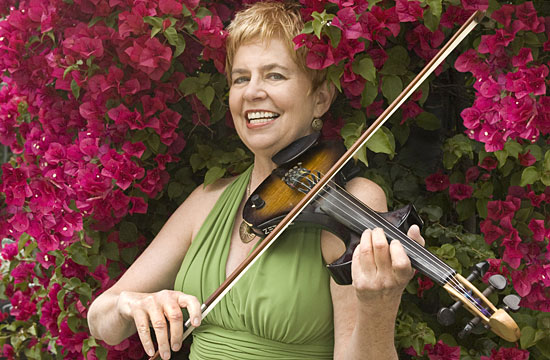
Everything’s coming up bougainvillea for Susie Hansen, who performs with her band Saturday at El Cariso.
This Saturday in Sylmar, the Susie Hansen Latin Jazz Band will perform a free concert as part of the “Concerts in the Park” series, hosted by the Los Angeles County Department of Parks and Recreation.
Hansen leads the group’s salsa stylings with her electric violin, joined by a host of vocalists and instrumentalists on piano, percussion and brass. The show takes place from 6 p.m. to 8 p.m. on Saturday, August 4. El Cariso Park is located at 13100 Hubbard Street.
Posted 7/31/12
Golden moment for Topanga Library
July 26, 2012
Check this out: The new Topanga Library has earned LEED Gold certification for its environmentally-friendly construction and energy-saving features.
The LEED certification, which stands for Leadership in Energy and Environmental Design, is a sought-after designation awarded by the U.S. Green Building Council to acknowledge environmentally sound building practices and the creation of sustainable structures.
In the case of the Topanga Library, features such as a heat-minimizing roof and a recycled water irrigation system are built into the design. Trees cut down during construction were milled into furniture now being used by library patrons.
In addition, 35% of the energy being used in the building falls into the green, non-carbon based category, said David Howard of county’s Department of Public Works, which managed the project.
The library was constructed with the aim of achieving LEED Silver status; winning the gold, as any Olympian will tell you, has an even sweeter ring to it.
“We are so absolutely thrilled,” said Stacy Sledge, president of the Topanga Town Council, who predicted the designation could help turn Topanga into a “real eco-city.”
“This is a wonderful, wonderful acknowledgement to the library and to the Topanga community,” she said. “I have goose bumps.”
Posted 7/26/12
New Counsel lends a steady hand
July 25, 2012
When John F. Krattli started work at the Los Angeles County Counsel’s office, fresh out of law school, his plan was to do a few years there and then move.
“I was so sure that I wasn’t going to be here long-term that when my wife and I needed money to make a down payment on a home in the early 1980s, I pulled out of the county retirement system,” he recalls, chuckling. “I never envisioned things would turn out the way they did.”
This week, Krattli, a 33-year employee of the county, was officially named Los Angeles County Counsel, a job he has unofficially held since early this year. He succeeds Andrea Ordin, who held the post for two years before retiring at the end of January.
“It’s definitely an honor,” he says, “even if it’s not entirely new.’
As the county’s top lawyer, Krattli, 59, will oversee some 520 employees, including 285 attorneys. His salary will be $275,000 a year.
The son of a U.S. Navy commander, he was born in Norfolk,Va., and raised in Japan and San Diego County. He graduated from UC Santa Barbara with a degree in economics, spent a year working at the Stanford Research Institute and then entered the UCLA School of Law.
He was admitted to the State Bar in late November 1978 and started work in the general litigation division of the County Counsel’s office five weeks later. Over the ensuing decades, he would come to oversee at least a half-dozen divisions of the office, and to play a part in some of the most complex municipal litigation in Southern California.
His assignments as a deputy county counsel, for instance, included the massive Big Rock Mesa lawsuit, which was one of the largest inverse condemnation cases in local history. The case stemmed from a 1983 landslide above Pacific Coast Highway in Malibu and lasted some 4 1/2 years before the county, the state and some 240 homeowners reached a settlement.
He also began to rise through the ranks—his initial career plans notwithstanding. He was made chief of the office’s public works division in 1994, and became principal advisor to the Los Angeles County Local Agency Formation Commission, advising LAFCO during the unsuccessful Hollywood, Harbor area and San Fernando Valley secession bids in 2002.
He was promoted again, in 2003, to senior assistant county counsel, and became a member of the Los Angeles County Claims Board the following year.
Along the way, he bought back into the retirement system.
“In fact, I was contemplating retiring myself,” he says laughing.
An avid traveler and father of two, Krattli, who lives in Simi Valley, said he had just started thinking about taking trips with his wife, Kay, a retired Granada Hills schoolteacher, and spending more time with his 1-year-old twin grandsons when Ordin and her chief deputy both announced last year that they would be retiring. By then, Krattli had served under six County Counsels.
Ordin named him Acting Chief Deputy in December, and he has been Acting County Counsel since February 1.
“It wasn’t my intention to become the County Counsel, but I’ve certainly enjoyed the job,” Krattli says. “It’s certainly been challenging. There is never a lack of issues, and the county has great managers to work with. And we have not only just an outstanding group of attorneys and staff, but a very collegial and friendly workplace.”
In fact, he says, one of his great satisfactions on the job stems from the long experience that he and many of his coworkers share with the county, and the knowledge that he is surrounded by steady hands.
“One of our hallmarks in this office is that people like to work here, and that has certainly been to the benefit of the county, because it means that there’s just a tremendous amount of historical knowledge here,” Krattli says.
“There are many people in this office who have worked here for a long time, and who have developed tremendous expertise.”
Now—whether he envisioned it or not—the office will be led by one of them.
Posted 6/6/12
High season for rescues
July 25, 2012
For the Malibu Search and Rescue team, things can get crazy-busy out there.
Emphasis on the crazy. Inspired by videos posted online, hikers are flocking to spots like Rindge Dam in Malibu Canyon, where the inexperienced, unlucky or foolhardy can get into trouble fast.
A dramatic, 7-hour rescue operation last week—in which three lost and stranded hikers who’d apparently learned of the spot in an Internet video had to be pulled out of a deep canyon in the darkness—illustrates what can happen when YouTube-fueled aspirations run into the rugged realities of the great outdoors.
Other factors attracting crowds to local wilderness areas include good weather, the opening of new trails and facilities in the Santa Monica Mountains, the popularity of online “meetups” for hikers and even a trend toward stay-at-home vacations.
In Malibu, that adds up to what may be the busiest season yet for the local rescue team, made up of about 30 reserve sheriff’s deputies and civilian volunteer specialists and support staff.
Coming off last year’s record-setting 128 call-outs, the team as of last week had logged 75 responses in 2012, compared to 68 at this time last year. “And we haven’t gotten into August yet,” said Jeremy Littman, a television writer who keeps the stats for the team and serves as its lieutenant.
Two people have died, one of them a suicide, at Rindge Dam in the past eight or nine months, said David Katz, another member of the team who also acts as its public information officer. Others have been injured jumping off the dam into the water below—a stunt immortalized in YouTube videos, some of them set to music.
“It’s a dam. It’s not built for playtime,” Katz said. “It’s a dangerous area and if you do get injured and have to be evacuated, you’re 600 feet deep in a canyon.”
The surge in rescue calls isn’t limited to Malibu. Through June, calls were up year-over-year for all but one of the county’s eight search and rescue teams.
“It sure has been an active few months across the county,” said Michael Leum, assistant director of the sheriff’s Reserve Forces Bureau and reserve chief of its search and rescue operations countywide. “It’s been super-busy, with people staying around locally and doing the ‘staycation’ thing. On Sunday alone, Crescenta Valley had 10 different response calls.”
And Friday, July 13, proved to be a particularly unlucky day for hikers in Eaton Canyon—and an exceptionally demanding one for rescuers, who had to make three helicopter rescues within the space of an hour.
In Leum’s view, one of the risk factors for getting in trouble on the trail is simply being male.
“Ninety-nine percent of the people we go looking for are guys who go out by themselves and don’t tell anyone where they’re going,” Leum said.
Added Sgt. Tui Wright of the Malibu/Lost Hills Sheriff’s Station, who oversees the area’s search and rescue team: “There really is a lack of common sense out there and people do a lot of things to put themselves in peril.”
Still, you don’t have to be a thrill-seeker to run into trouble, said Malibu search and rescue team captain Mark Campbell. “Some things do happen to well-meaning people,” he said. Those who want to stay out of harm’s way should file a hiking plan with the sheriff’s department before setting out. (Download one here.) Other tips: allow plenty of time to complete the hike before dark; carry water, food and warm clothes; pay attention to the weather forecast; and bring along a well-charged cell phone.
Carrying a phone is particularly important. Because while technology leads some people into trouble, it also can help lead them out of it—sometimes in unexpected ways.
Consider the case of the 17-year-old hiker, stranded last month on a steep ridgeline, who used the light from his iPhone to help rescuers find him and whisk him to safety.
Posted 7/25/12
The Malibu search and rescue team is looking for volunteers. Details on how to join are here.
C’mon in, the water’s fine. Really.
July 25, 2012

Dancers splash in the Arthur J. Will fountain's new "membrane pool" during Thursday's dedication ceremony.
It’s big, it’s wet and it’s already making a big splash as the first segment of Los Angeles’ Grand Park opened this week.
The 6,200-square-foot pool in front of the restored Arthur J. Will Memorial Fountain has only a quarter-inch of water, but it’s likely to be a huge crowd magnet, says Jim Garland, president of Fluidity Design Consultants, which oversaw the fountain’s restoration and expansion.
“It’s going to be awesome,” says Garland. “There’s a similar pool around the Millennium Park Fountain in Chicago, and kids roll around in it, and people just love it, and it’s probably the most popular fountain today in the United States.”
But under the sleek, nonslip surface and its inviting jets of water, an elaborate system of machinery and maintenance workers will be hustling around the clock to keep that expanse—technically known as a “membrane pool”—clean. The pool’s filtration system was kept separate from the one used for the fountain itself, Garland says, because health codes set a higher standard of cleanliness for interactive water elements.
Every drop will circulate every half-hour through an underground filtration and disinfection system that will kill bacteria with ultraviolet light and chlorinate the water. Security guards will patrol to ensure that no one abuses the pool area or mistakes it for a bathtub. And the crews that monitor the fountain at the Dorothy Chandler Pavilion will manually test for cleanliness at least three times daily.

Barefoot in the park: Dignitaries like Eli Broad are among the first to take the plunge after Thursday's ribbon-cutting.
“It’s about a 10 minute test—we just take a water sample and drop in a tablet,” says Keith McTague, director of building services and chief engineer at the Music Center. “We’re mainly doing it as a check and balance on the filtration system, which is automatic, and so that the readings are documented. But if we have to do it more often, we will.”
These safeguards are crucial because, while the historic Will Memorial Fountain was designed to keep people out of its waters, the adjacent membrane pool was conceived as a way to entice kids and grown-ups alike into getting wet.
“Nobody was sure there would be money for an interactive area like that,” Garland says. “But…we all fought to keep it in.”
Much of the inspection and testing of the system will rest with the Department of Public Health environmental health unit which, among other duties, acts as the county’s “fountain police.”
Chief Environmental Health Specialist Bernard Franklin says the Grand Park membrane pool is different from the roughly two dozen other interactive fountains throughout the county. Most of those, he says, are “splash pads” in which water spurts from a dry deck surface—not like Grand Park, where jets are placed in an ever-present layer of water.
In fact, Franklin says, the Grand Park pool will be the last of its kind in the county after September, when revisions to the California Building Code and the California Code of Regulations will prohibit pools of standing water in fountains that encourage public interaction with the water.
Franklin, who helped author the new rules, says that while the Grand Park pool will be well maintained, others with a lesser design or oversight could generate potentially unhealthy conditions. “Pools like these can be big collectors if you’re not careful,” he says. “Dirt gets in them, pigeons and ducks come around them, people try to use them in ways they aren’t supposed to.”
To that end, camera monitors and round-the-clock security will be in place to discourage mischief and enforce rules that will, among other things, ban camping and skateboarding in the park.
The results promise to be well worth it.
As the designer Garland puts it: “At night, you’ve never seen anything like it. It’s going to be magical.”
Posted 7/26/12
Trains for night owls
July 24, 2012
Heading out to experience L.A.’s famous nightlife? Here’s a new reason to celebrate: Metro is extending rail service until 2 a.m. on Friday and Saturday nights.
Currently, final trains leave between midnight and 1 a.m., depending on the station and rail line. Starting July 27, the last trains on all rail lines will not depart until 2 a.m., and the last Orange Line bus won’t depart from North Hollywood until 2:40 a.m. to accommodate transfers from the Red Line. Trains will run every 20 minutes during the new hours to destinations like Hollywood, downtown L.A., Pasadena and Long Beach.
The service expansion should be a boon for people who work or play into the wee hours, and need a way home that doesn’t involve driving or hailing a cab.
Lt. Ron Katona, the officer in charge of traffic coordination for the Los Angeles Police Department, says the new service provides another way for revelers to get home safely.
“As far as drinking is concerned, we always recommend using a designated driver or taking public transportation instead of driving,” said Katona. “This will give people another option.”
Metro CEO Art Leahy said the move should help expand Los Angeles’ growing cadre of train riders.
“By extending our service hours we will attract more people, especially young people,” Leahy said.
Eventually, Leahy hopes to increase night service hours even further, bringing L.A. closer to the 24-hour service of cities like New York and Chicago in areas where the extended hours prove popular.
“This is a test to see how it works,” Leahy said. “We may keep it on some lines and drop it on others depending on how many people use it.”
The move’s already receiving good reviews.
“We win!!” exulted the Facebook fan page called “Keep The L.A. Metro Rail Open After-Hours,” which is pushing for even later hours.
A bartender at Blue Palms Brewhouse in Hollywood, who identified himself only as Bix, bets the late trains will be good for business.
“We have a lot of guests that come in from the Valley, so now they can stay longer,” he said.
Posted 7/18/12
Skirball demo prompts freeway closures
July 24, 2012
Even before Carmageddon II comes to town, sections of the 405 Freeway will be shutting down overnight for the next two weeks so that the south side of the Skirball Bridge can be demolished.
The entire southbound 405 will be shut down on July 24, 25 and 30 from the 101 Freeway to Getty Center Drive. Ramp closures will begin as early as 7 p.m., with the full southbound freeway closing from midnight to 5 a.m.
The northbound 405 is set to close on July 26, 27 and 31, and on Aug. 1, 2 and 3, from Getty Center Drive to Ventura Boulevard. Those closures will follow the same pattern, with ramps shutting down around 7 p.m. and the entire northbound freeway closing from midnight to 5 a.m.
The Skirball Bridge over the freeway will itself be closed from 10 p.m. through 6 a.m. every night from July 30 to August 3.
The bridge is one of three overpasses that are being torn down and rebuilt during the multi-year project to create a 10-mile northbound carpool lane on the 405, along with other improvements.
Demolition of the Skirball and Sunset bridges has required a series of overnight closures of segments of the freeway. But taking down the Mulholland Bridge is a more complex job requiring the full, weekend-long closure of the entire stretch of the 405 between the 10 and the 101. The first Carmageddon, in which the south side of the bridge was torn down, came to a successful conclusion last summer when the work was finished earlier than expected and widespread predictions of traffic gridlock averted.
Carmageddon II is set to take place the last weekend in September. Officials are urging motorists to once again stay off the roads. And they warn that this time around, the work is likely to require a full 53 hours to complete.
Posted 7/24/12
Meeting to preview the road ahead
July 24, 2012
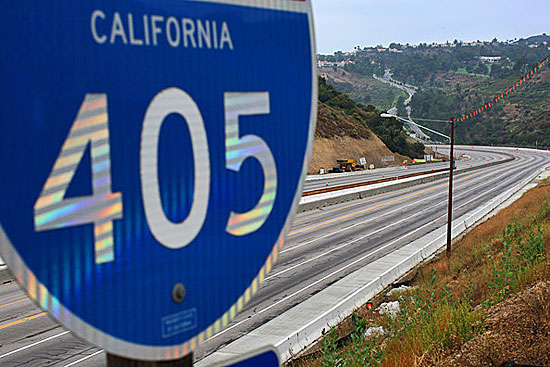
As the 405 Project moves forward on multiple fronts, a community meeting has been set to preview what's next.
If you live or drive near the 405 Freeway, it’s impossible to miss the massive construction project going on in the Sepulveda Pass. This week, a community meeting offers a chance to learn more about what’s ahead—and how best to navigate delays and detours as the project moves forward on multiple fronts. The meeting takes place at the Mirman School Auditorium, 16180 Mulholland Drive, on Thursday, July 26, from 6 p.m. to 8 p.m.
The first hour of the meeting will consist of a presentation on Carmageddon II—the upcoming 53-hour closure of the freeway—as well as details on the September opening of Sunset Bridge and the reconstruction schedule for the Wilshire ramps. The remaining hour will be devoted to questions and answers.
For more information, contact Metro Community Relations at (213) 922-3665 or [email protected]. You can also get updates on the project page and The 405 Report.
Posted 7/24/12
Show of hands for the new CPR
July 24, 2012
Want to be a hero? It’s easier than you might think. With recent research showing that lives are saved when bystanders get involved, L.A. County and the American Heart Association have launched a campaign to train 10,000 Angelenos in a simple, “hands-only” form of CPR that anyone can perform.
It turns out that you don’t have to give mouth-to-mouth resuscitation, sit through a lengthy class or hold an official certificate to play a crucial role when an adult has a sudden cardiac arrest. All you have to do is call 911 and begin performing rapid, deep compressions to the victim’s chest until the paramedics arrive.
“It’s so much easier now to teach, and for people to do,” said Cathy Chidester, director of the county’s Emergency Medical Services agency.
You can even learn the easy technique at your local park, grocery store, Costco or Wal-Mart. County fire officials will be fanning out on Thursday, June 7, in a massive educational effort intended to reach people in every part of the community. A list of locations where county fire personnel will be teaching the technique is here; a comprehensive list of other places where the training is being offered Thursday is here.
It’s hard to overstate the importance of learning to perform this simple intervention: “It increases the number of potential lifesavers on the street in our community,” said Kristine Kelly, communications director for the American Heart Association in Los Angeles. “It just empowers people.”
And empowered people can make a huge difference.
“Approximately 80% of cardiac arrests happen at home,” Supervisor Zev Yaroslavsky said in a motion to declare Thursday “Sidewalk CPR Day” in the county. “Put very simply: The life you save with CPR is most likely to be someone you love.”
Posted 6/6/12




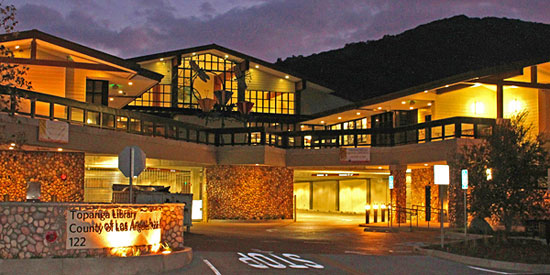
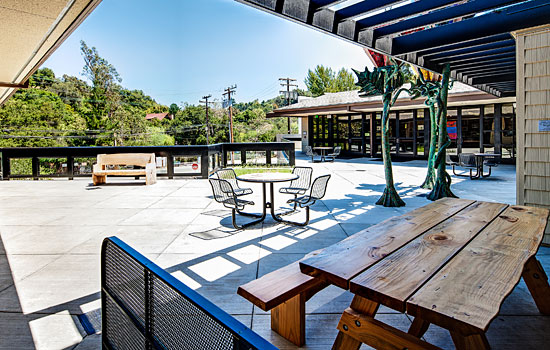
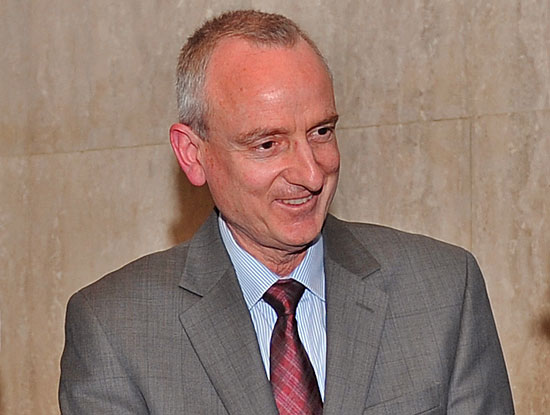


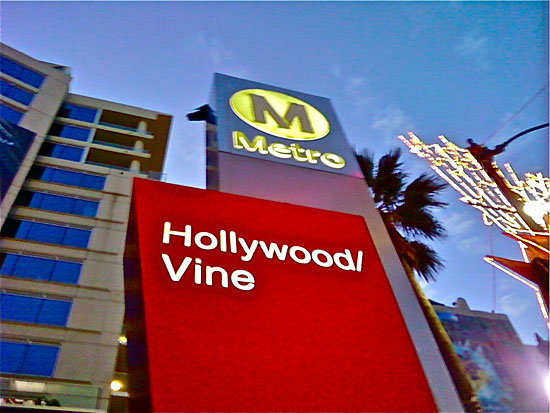
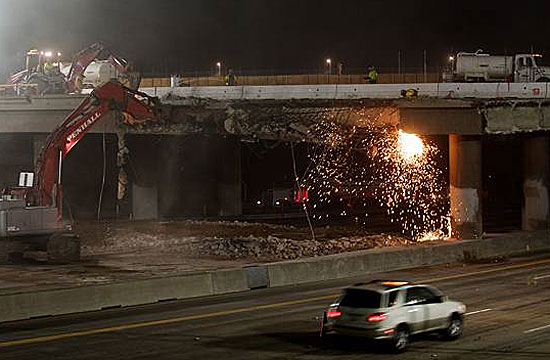
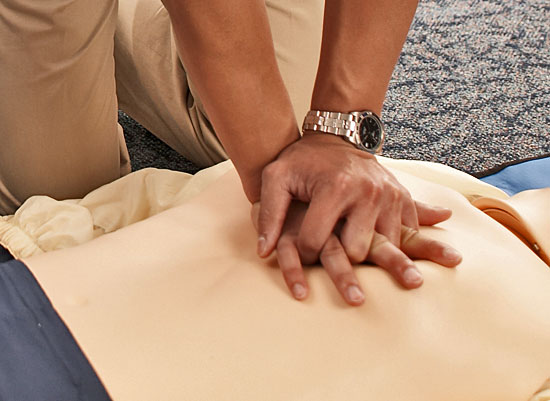





 Check for the latest closure information
Check for the latest closure information








